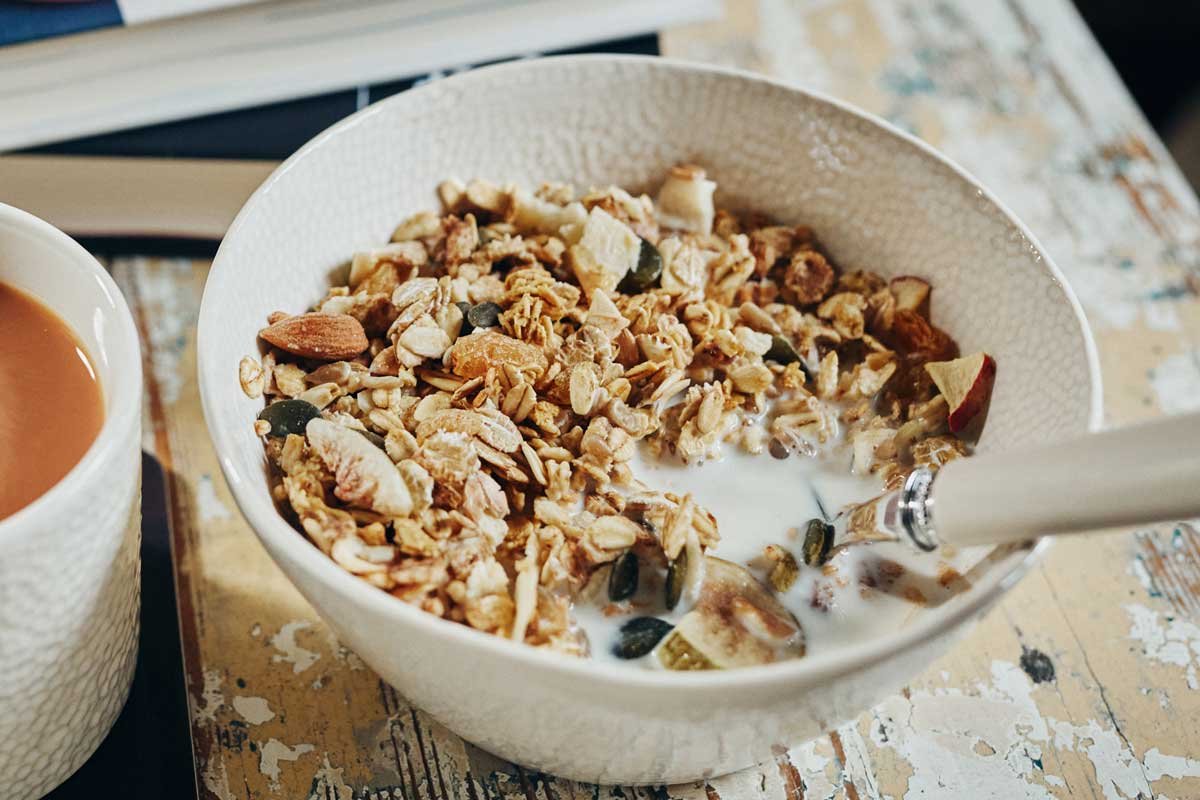Beat the burnout and eat for energy by Lily Soutter
Sometimes it can feel like you’re doing everything right, from work-life balance to workout bliss, but you still end up bushed. If so, it could be time to think about your eating habits.
If you feel tired all the time, it may not be down to working too hard or burning the candle at both ends. Even when we’re doing the whole eight hours sleep-two litres of water a day thing, we can all experience moments of real fatigue that are simply related to what and when we eat.
And as these slumps can come at the most inconvenient moments – yawning through the boss’s Zoom conference is never a good look – it’s worth getting to the root of what’s de-energising you. Here are five things to look out for.
1. Get off the blood sugar roller coaster
This is the most effective way to maintain energy levels. It may be tempting to rely on high-sugar boosts to temporarily improve alertness, but that can lead to blood-sugar highs and lows. How does low blood sugar feel? You probably already know: energy slumps, lack of concentration, irritability and – the sting – craving more sugary, quick-fix foods.
Instead opt for something with a low glycemic load such as Lizi’s Low Sugar Granola, which keeps blood sugar stable and provides a more sustained source of energy.
2. Go for whole grains and fibre-rich carbohydrates
Sugar, however, isn’t something to avoid entirely – our brains need it to function, and they use up to 20 per cent of all the energy required by our bodies. All carbs break down into sugar but it’s the slow-release, fibre-rich kinds that offer sustained fuel all day long. Opt for wholegrain rice, bread, pasta, oats, potatoes with the skin on, quinoa and buckwheat.
3. Manage the post-lunch slump
Heavy and high-fat lunches can make us more sleepy but a simple divide-and-conquer strategy can beat the post-lunch slump: just fill half your plate with vegetables, a quarter with carbohydrates and a quarter with protein and healthy fats. By balancing your nutrition in this way, you’re less likely to hit the buffers come 3pm.
And for those of us who spend most of the day sitting in front of a screen, remember that movement is one of the most potent energy boosters and stress relievers: try a brisk walk after lunch or a few stretches at your desk.
4. Get checked out
Low levels of certain nutrients can leave us feeling tired, lacking in energy and more susceptible to infections. If you’re eating well and still feeling fatigued, it can be concerning – but a simple blood test with your GP can give a clearer picture of levels of iron, vitamin B12 and vitamin D.
5. Stay active, reduce stress
It’s a no-brainer that good quality sleep will aid optimal energy levels and productivity throughout the day. Conversely, late-night eating, heavy meals, caffeine and alcohol will all reduce the quality of sleep. Engage with good sleep hygiene and resist the temptation to scroll in bed – your phone screen’s blue light is the enemy of a good night’s rest.


